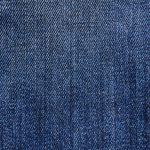Discover the 5 best ways quality impacts fabric durability, and how you can ensure your fabrics stand the test of time.
From fiber quality to weave and knit techniques, finishing processes, thread count, and care and maintenance, this article will provide you with valuable insights on how to choose and maintain durable fabrics.
With these tips, you’ll be able to make informed decisions about the fabrics you purchase and prolong their lifespan for years to come.
Table of Contents
Fiber Quality
To ensure the durability of your fabric, you should choose fibers with high quality. The quality of the fibers used in fabric plays a vital role in determining how well it can withstand wear and tear. When it comes to durability, two important factors to consider are moisture absorption and colorfastness.
Fibers with high moisture absorption have the ability to absorb and release moisture efficiently. This is important because fabrics that retain moisture for extended periods of time are more prone to mold, mildew, and other forms of damage. Fabrics with low moisture absorption can also make you feel uncomfortable by trapping sweat and causing irritation.
Colorfastness refers to the ability of a fabric to retain its color over time, even when exposed to external factors like sunlight and washing. Fabrics with poor colorfastness can fade quickly, losing their vibrant appearance and looking worn out. On the other hand, fabrics with high colorfastness will retain their color for a longer period, making them look fresh and new.
Weave and Knit Techniques
Choose fabrics that have a tight weave or knit to enhance durability. The weave or knit of a fabric refers to the way the threads or yarns are interlaced together. Fabrics with a tight weave or knit are less prone to fraying and tearing, making them more durable in the long run.
When selecting fabrics, pay attention to the stitching techniques used as well. High-quality stitching techniques, such as reinforced seams and double stitching, can greatly contribute to the overall durability of the fabric. These techniques ensure that the fabric is securely held together and less likely to come apart at the seams.
Additionally, consider the type of fabric dyes used. Some dyes are more resistant to fading and washing, which can help maintain the fabric’s appearance and durability over time.
It’s also worth noting that certain weave and knit techniques can affect the fabric’s breathability and stretchiness. So, if you have specific requirements for these properties, be sure to choose a fabric with the appropriate weave or knit technique.
Finishing Processes
Continue to enhance the durability of your fabric by considering the various finishing processes applied to it. Two important finishing processes that can significantly impact fabric durability are sizing and starching, as well as dyeing and printing.
Sizing and starching involve the application of chemicals to the fabric to improve its strength and resistance to wear and tear. The chemicals used in sizing and starching help to fill in the gaps between the yarns, making the fabric more compact and less prone to fraying. This process also adds a protective layer to the fabric, making it more resistant to stains and wrinkles.
Dyeing and printing, on the other hand, add color and patterns to the fabric. The dyes and pigments used in these processes can also enhance the durability of the fabric. For example, certain dyes have UV-resistant properties, which can protect the fabric from fading when exposed to sunlight. Additionally, the printing process can help to seal the color into the fabric, preventing it from washing out or fading over time.
Thread Count
You can determine the durability of a fabric by considering its thread count. Thread count refers to the number of horizontal and vertical threads per square inch in a fabric. Generally, a higher thread count indicates a stronger and more durable fabric. However, it’s important to strike a balance between durability and softness. Fabrics with a very high thread count can feel stiff and less comfortable.
When it comes to breathability, thread count plays a crucial role. Fabrics with a lower thread count tend to be more breathable, allowing air to circulate more freely. This can be particularly beneficial in warm climates or during the summer months. On the other hand, fabrics with a higher thread count may trap heat and moisture, leading to a less breathable and potentially uncomfortable experience.
To help you understand the relationship between thread count, durability, and breathability, here is a table showcasing different thread counts and their corresponding characteristics:
| Thread Count | Durability | Softness | Breathability |
|---|---|---|---|
| 200-400 | Moderate | Soft | Good |
| 400-600 | High | Medium | Moderate |
| 600+ | Very High | Stiff | Limited |
Care and Maintenance
To ensure the longevity of your fabric, proper care and maintenance are essential. Stain removal is a crucial aspect of fabric care. Whether it’s a spill or a stubborn stain, acting quickly is key. Blot the stain gently with a clean cloth or paper towel to absorb as much of the liquid as possible. Avoid rubbing the stain, as it can push it deeper into the fabric fibers. Use a stain remover that’s suitable for the fabric type and follow the instructions carefully. After treating the stain, wash the fabric according to the manufacturer’s instructions.
In addition to stain removal, proper storage methods are vital for fabric durability. When storing fabric, make sure it’s clean and dry to prevent mold or mildew growth. Keep it away from direct sunlight, as prolonged exposure can cause fading. Folding fabrics neatly and placing them in a cool, dark, and dry place will help maintain their quality. Avoid storing them in plastic bags, as they can trap moisture and lead to damage. Instead, use breathable fabric storage bags or acid-free tissue paper to protect delicate fabrics.
Frequently Asked Questions
Can Fabric Durability Be Improved by Choosing a Specific Color or Pattern?
Choosing a specific color or pattern may not directly improve fabric durability. However, the impact of fabric construction on durability is significant. Focus on high-quality materials and strong weaves for longer-lasting fabrics.
Are There Any Environmental Factors That Can Affect the Durability of Fabric?
Environmental factors can have an impact on fabric durability. To prolong the lifespan of your fabrics, avoid exposing them to excessive sunlight, moisture, and harsh chemicals. Proper care and maintenance are key.
Can the Durability of Fabric Be Affected by the Type of Detergent Used During Care and Maintenance?
Yes, the type of detergent you use during care and maintenance can affect the durability of fabric. Fabric softeners can reduce fabric longevity, and washing at high temperatures can also have a negative impact.
Does the Durability of Fabric Differ Based on the Country of Origin?
The durability of fabric can differ based on the country of origin. Fabric manufacturing techniques and the impact of fabric weave on durability are factors that contribute to this difference.
Can Fabric Durability Be Compromised by Exposure to Certain Chemicals or Cleaning Agents?
Exposure to certain chemicals or cleaning agents can compromise the durability of fabric. The effect of fabric composition on durability and the impact of manufacturing processes on fabric longevity are important to consider.
- Technology's Influence on Fashion Fabrics - July 24, 2024
- Trendy Fabric Patterns for the Next Season - July 24, 2024
- Top Eco-Friendly Fashion Brands - July 24, 2024






